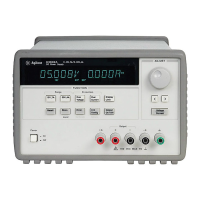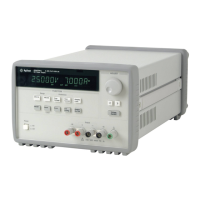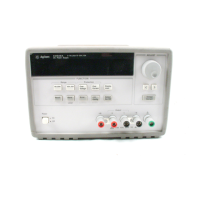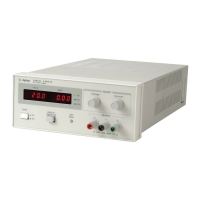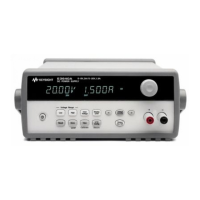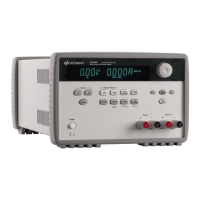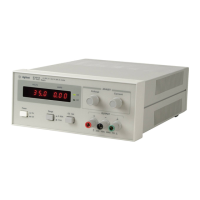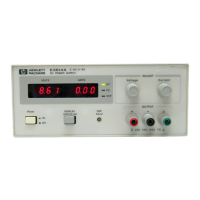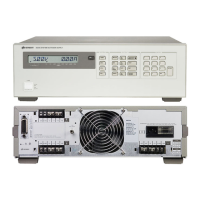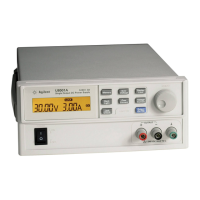Chapter 3 Calibration Procedures
Constant Voltage (CV) Verifications
54
Normal Mode Voltage Noise (CV Ripple and Noise)
The normal mode voltage noise is in the form of ripple related to the line frequency
plus some random noise. The normal mode voltage noise is specified as the RMS or
peak-to-peak output voltage in a frequency range from 20 Hz to 20 MHz.
1 Turn off the power supply and connect the output to be tested as shown in Figure 3-3
to an oscilloscope (ac coupled) between (+) and (-) terminals.
2 Turn on the oscilloscope. Configure the oscilloscope as shown below:
• Set the oscilloscope to AC mode and bandwidth limit to 20 MHz.
• Set the vertical sensitivity to 3 mV/div.
• Set the horizontal sweep speed to 10 ms/div.
• Enable auto/continuous triggering.
• Enable Vpp measurement function.
3 Connect a resistive load (1.2 Ω for +6 V supply and 25 Ω for ±25 V supplies) as shown
in Figure 3-3 (see Table 3-2).
4 Turn on the power supply and select the output to be tested using the meter and adjust
selection key on the front panel. Enable the outputs and set the display to the limit
mode. When the display is in the limit mode, program the current of the selected
output to the maximum programmable value and the voltage to the full-scale value
(see Table 3-2).
5 Check that the front panel CV annunciator remains lit. If not lit, adjust the load down
slightly.
6 Note that the waveform on the oscilloscope does not exceed the peak-to-peak limit
of 2 mV for each of the three outputs.
7 Disconnect the oscilloscope and connect a RMS voltmeter in its place as shown in
Figure 3-4. The RMS voltage reading does not exceed the RMS limit of 0.35 mV for
each of the three outputs.
8 Repeat steps (1) through (7) for the remaining outputs.
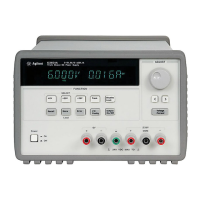
